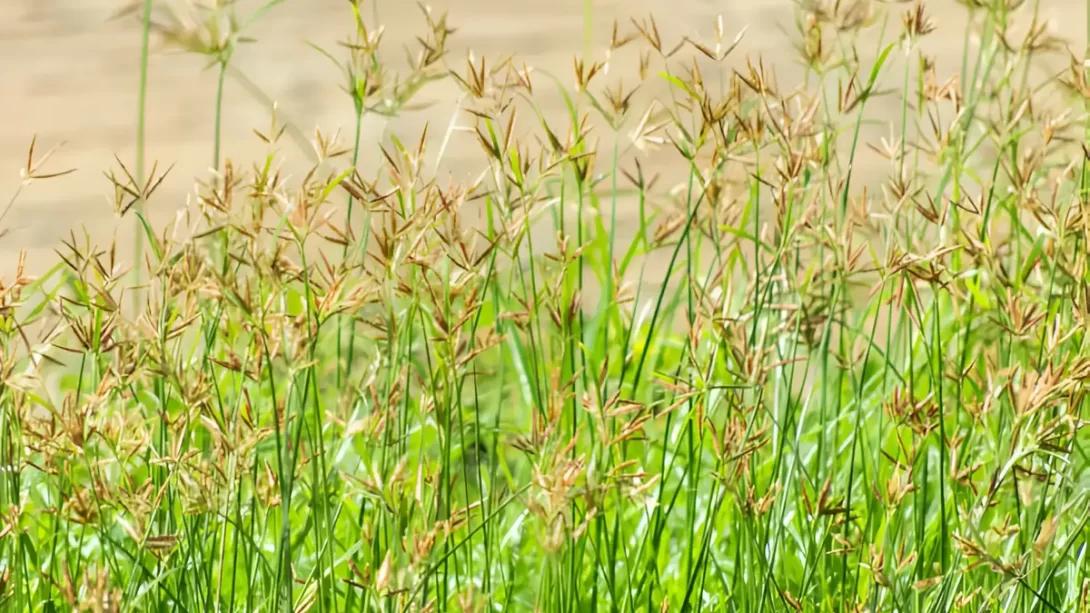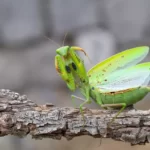Nutsedge, often referred to as nutgrass, is a common and persistent weed found in gardens and lawns worldwide. Known for its resilience and rapid growth, nutsedge can be a significant nuisance for gardeners and homeowners. This article focuses on natural and effective methods to control and eliminate nutsedge, providing a sustainable approach to managing this challenging weed.
Nutsedge
Nutsedge is characterized by its grass-like appearance, with a distinctive triangular stem and glossy leaves. It thrives in moist, poorly drained soils but can adapt to a variety of conditions. There are two main types of nutsedge: yellow and purple, each with slight differences in appearance and growth habit. One of the reasons nutsedge is so difficult to control is its reproductive structure; the plant develops tubers, known as nutlets, underground, which can give rise to new plants even if the original is removed.
The Challenges of Nutsedge Removal
The resilience of nutsedge lies in its aggressive growth pattern and the ability of its tubers to survive various conditions. Traditional removal methods, such as regular mowing or hand pulling, often fail to eradicate it completely because any remaining nutlets can quickly sprout new plants. Therefore, controlling nutsedge requires a consistent and long-term management strategy, focusing on both removal and prevention.
Natural Methods for Controlling Nutsedge
There are several natural approaches to controlling nutsedge, each targeting different aspects of its growth and survival:
Cultural Control Methods
Improving the overall health of your lawn and garden can be an effective way to suppress nutsedge. This includes:
- Lawn Health: Maintaining a thick, healthy lawn can prevent nutsedge from establishing. Regular overseeding and proper fertilization can help achieve this.
- Mowing Techniques: Mowing at the right height for your grass type can discourage nutsedge growth. However, since nutsedge can grow faster than regular grass, it may require frequent mowing.
- Watering Practices: Nutsedge prefers moist conditions, so adjusting your watering schedule to avoid over-watering can help control its spread.
Soil Health
Healthy soil is less conducive to nutsedge growth. Improving soil drainage and aeration can reduce the moist conditions that nutsedge favors. Regular soil testing and amendments can also help maintain optimal soil health.
Specific Natural Techniques
To effectively manage nutsedge, it’s essential to employ specific techniques that target the plant’s weaknesses. Here are some natural methods to consider:
Hand Pulling
- Best Practices: Hand pulling can be effective, especially for small infestations. It’s important to pull out the entire plant, including the roots and nutlets. This task is easier when the soil is moist.
- Frequency: Regular checks and removal are necessary, as new sprouts can quickly emerge from leftover nutlets.
Solarization
- Process: Solarization involves using the sun’s heat to kill nutsedge. This is done by covering the affected area with clear plastic during the hottest part of the summer, trapping heat and effectively baking the plants and tubers underneath.
- Duration: The plastic should remain in place for at least 4-6 weeks for maximum effectiveness.
Organic Mulching
- Suppressing Growth: A thick layer of organic mulch can suppress nutsedge by blocking sunlight. This can be an effective method in garden beds.
- Mulch Types: Use materials like wood chips, straw, or compost, ensuring the layer is several inches thick.
Natural Herbicides
- Options: Natural herbicides, such as vinegar-based solutions, can be used on nutsedge. However, their effectiveness may be limited, and repeated applications will likely be necessary.
- Application Caution: Be cautious when applying any herbicide, as it can also affect nearby plants.
Plant Competition
- Outcompeting Nutsedge: Planting competitive vegetation can help control nutsedge. Dense-growing ground covers or grasses can outcompete nutsedge for resources.
- Considerations: Choose plants that are well-suited to your soil and climate for the best results.
Preventing Nutsedge Re-Emergence
After removing nutsedge, it’s crucial to implement strategies to prevent its return:
- Monitoring: Regularly inspect your lawn and garden for early signs of nutsedge.
- Soil Health: Continue to maintain healthy soil and proper drainage to create unfavorable conditions for nutsedge.
- Lawn Care: Keep your lawn thick and healthy to outcompete any potential nutsedge growth.
Conclusion
Successfully managing and eradicating nutsedge in a natural and sustainable manner requires understanding, patience, and persistence. This resilient weed poses a significant challenge due to its aggressive growth and ability to reproduce from tubers, but with the right strategies, it can be effectively controlled.
To recap, key methods for naturally dealing with nutsedge include:
- Regular Hand Pulling: Effective for small infestations, ensuring complete removal of roots and nutlets.
- Soil Solarization: A useful technique for larger affected areas, especially during the peak of summer heat.
- Organic Mulching: Helps suppress nutsedge growth in garden beds by blocking sunlight and maintaining soil health.
- Natural Herbicides: While their effectiveness may be limited, they can be part of an integrated approach.
- Planting Competitive Vegetation: Establishing dense ground covers or robust grasses can naturally outcompete nutsedge.
Preventative measures such as maintaining a healthy lawn, improving soil conditions, and regular monitoring play a crucial role in preventing the re-emergence of nutsedge. By creating an environment that is less conducive to its growth, you can keep this persistent weed at bay.
Dealing with nutsedge is undoubtedly challenging, but it’s a task that can be tackled effectively with natural methods. Through consistent effort and a proactive approach to lawn and garden care, you can control and eventually eradicate nutsedge, paving the way for a healthier, more vibrant outdoor space. Remember, the key to success in managing nutsedge naturally lies in understanding its growth patterns and adopting a comprehensive, sustained approach to weed control.



